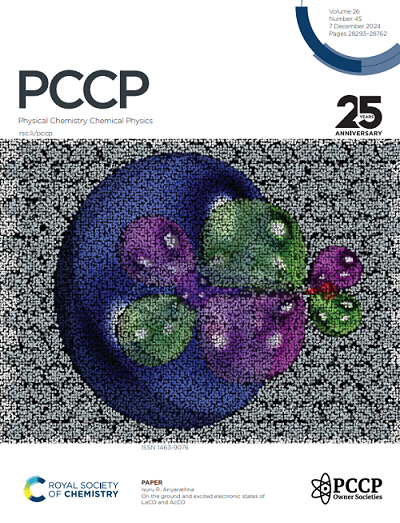Reinforcement learning-based inverse design of composite films for spacecraft smart thermal control
IF 2.9
3区 化学
Q3 CHEMISTRY, PHYSICAL
引用次数: 0
Abstract
Thermal control is crucial for the normal operation of spacecraft, as it directly affects the performance and lifespan of the payload. The thermochromic properties of VO2 give it a natural advantage in smart thermal control of spacecraft, but traditional design methods still struggle to meet the design expectations for thermal control composite films. Based on this, this paper focuses on the thermal control requirements for spacecraft and proposes the design of composite films that integrate the coordinated control of dynamic thermal emitters and solar reflectors using machine learning algorithms. Firstly, a reinforcement learning optimization framework was constructed using a transfer matrix method combined with deep Q-learning. Multiple Fabry–Pérot resonator stacked structures have been optimized for the design of dynamic thermal emitters. The results indicated that a three-resonator stacked structure achieved a wide adjustable emissivity range of 0.939 near the 10 μm wavelength band. Based on this structure, a solar reflector was further designed to achieve low absorption in the solar wavelength band. The resulting smart thermal control composite film achieved a low absorption of 0.180 in the solar wavelength band, while maintaining a high emissivity adjustable range of up to 0.806. The simulated thermal control performance in a space environment indicates that, accounting for solar absorptivity, the cooling power of the film can shift from −183.42 W m−2 to 83.13 W m−2 before and after the phase transition. Furthermore, the composite film can maintain good thermal control performance within a large range of incident angles, promoting the practical application research of smart thermal control composite films.

求助全文
约1分钟内获得全文
求助全文
来源期刊

Physical Chemistry Chemical Physics
化学-物理:原子、分子和化学物理
CiteScore
5.50
自引率
9.10%
发文量
2675
审稿时长
2.0 months
期刊介绍:
Physical Chemistry Chemical Physics (PCCP) is an international journal co-owned by 19 physical chemistry and physics societies from around the world. This journal publishes original, cutting-edge research in physical chemistry, chemical physics and biophysical chemistry. To be suitable for publication in PCCP, articles must include significant innovation and/or insight into physical chemistry; this is the most important criterion that reviewers and Editors will judge against when evaluating submissions.
The journal has a broad scope and welcomes contributions spanning experiment, theory, computation and data science. Topical coverage includes spectroscopy, dynamics, kinetics, statistical mechanics, thermodynamics, electrochemistry, catalysis, surface science, quantum mechanics, quantum computing and machine learning. Interdisciplinary research areas such as polymers and soft matter, materials, nanoscience, energy, surfaces/interfaces, and biophysical chemistry are welcomed if they demonstrate significant innovation and/or insight into physical chemistry. Joined experimental/theoretical studies are particularly appreciated when complementary and based on up-to-date approaches.
 求助内容:
求助内容: 应助结果提醒方式:
应助结果提醒方式:


